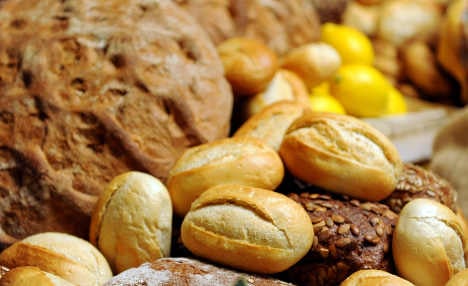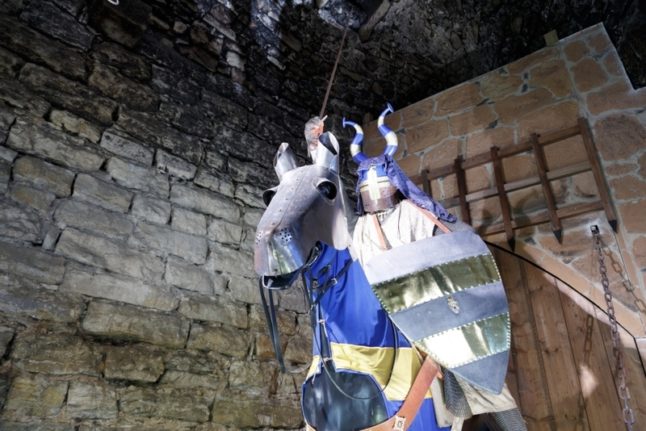“It’s a sense of home,” German master baker Karl-Dietmar Plentz muses, dipping his hands into a tray of flour and letting it run through his fingers as 26 types of bread bake in the ovens of his 136-year-old family business.
Behind him a worker deftly kneads two pieces of dough into identical loaves, one in each hand, as they roll off a cutting machine. They belong to a batch of “potato bread”, one of Plentz’s specialities that is still partly made the way his grandfather did it.
Pondering why Germany’s rich assortment of bread should be considered a global cultural asset, Plentz, a 46-year-old fourth generation baker from northeastern Germany who grew up behind the Iron Curtain, says “individuality” is important.
That’s not necessarily easy with supermarkets and petrol stations jostling to sell bread, cakes and pastries, and a changing on-the-go lifestyle meaning that Germany’s traditional ‘Abendbrot’ – supper of bread with cold meats – is on the wane.
About 500 bakeries closed over the past year, according to the German Federation of the Bakery Trade.
Peter Becker, federation president, said “diversity” was key to the UNESCO bid and would recognize the “pride in our products,” which are often crafted from recipes passed down from one generation to the next and may also reflect a regional identity.
“In France there are excellent baguettes, in Italy outstanding ciabatta, but worldwide, I think, only Germany has this variety, from wholemeal bread to good wheat bread,” he told AFP.
German bread ‘second to none’
Germany is due to become the 153rd state party to UNESCO’s 2003 Convention for the Safeguarding of the Intangible Cultural Heritage this week, with its 16 regions now collecting proposals for possible inclusion on a national inventory – a prerequisite for later UNESCO listing.
Germany’s history initially muddied plans to join the convention by raising fears that traditions distorted by the Nazis or the East German regime could be proposed, Benjamin Hanke of the German Commission for UNESCO said.
But other reasons also caused Germany to originally hang back, he said, including a general failure to grasp and clearly define the concept of heritage based on know-how rather than something concrete.
The baker’s federation threw its first “Day of German Bread” gala last month, appointing two “Brotschafter,” a neat blend of the German words for ambassador and bread, and trumpeted its ‘Bread Register.’
Around 3,000 speciality breads have so far been logged.
German bread has enjoyed high-profile endorsements recently. Outgoing US ambassador to Berlin Philip Murphy’s wife Tammy told reporters it was one of the things she’d recommend to visiting First Lady Michelle Obama.
“It’s second to none,” she enthused, while the frontman of US rock band 30
Seconds to Mars, Jared Leto, told fans at a concert “I love the German bread.”
The vast array of bread is partly down to Germany’s varied climate which allows all types of crops to thrive, Becker said.
History has ‘left its mark’
But history and geography too have played a role, he added, explaining that bread had been one way for the small princedoms that formerly dotted across Germany to carve out their own identity.
“Germany is located on the way to the sea. Many nations have come through here, the French for instance. Napoleon stopped over in Hamburg and we have here a ‘Franzbrötchen’ (French bread roll) which certainly originates from the French period.
“I believe it has all left its mark,” Becker said.
The baker’s trade now uses social media to attract fresh blood after an almost 30 percent drop since 2007 in apprentices amid a shrinking and ageing German population and an image problem over the early start to the workday.
“We found each other via Facebook. He wanted to become a baker and we were looking for an apprentice,” Plentz said of Spanish trainee Guellem Xanxo, 24,
who begins a two-year apprenticeship in August.
Family tradition
With a son and four daughters, Plentz does not know yet to whom he will hand over the reigns of the business he joined from school. It now employs about 100 people and counts five branches in the region around the town of Oranienburg, about 35 kilometres (22 miles) from Berlin.
He used to help out as a boy and went into the business after leaving school when the East German regime clipped his ambitions to study due to his Christian beliefs and failure to join communist youth groups.
But he says he has no regrets.
He proudly mentions “passion” and “creativity” when describing his work, adorning his bakery with bygone tools of the trade for myriad breads, some of whose intriguing names even he is at a loss to explain.
“Kaviarbrot”, it seems, has nothing to do with fish.
For Plentz, UNESCO recognition would be a stamp of approval and a celebration of age-old methods such as the wood-burning oven where he bakes on market days on the village square opposite his bakery.
But he also embraces change — as long as quality is maintained.
“I tried using a machine (to roll out the potato loaves), but I’m convinced of the craftsmanship and there was a difference in quality,” he said.
“So we do it like my grandfather did.”
AFP/kkf



 Please whitelist us to continue reading.
Please whitelist us to continue reading.
Member comments